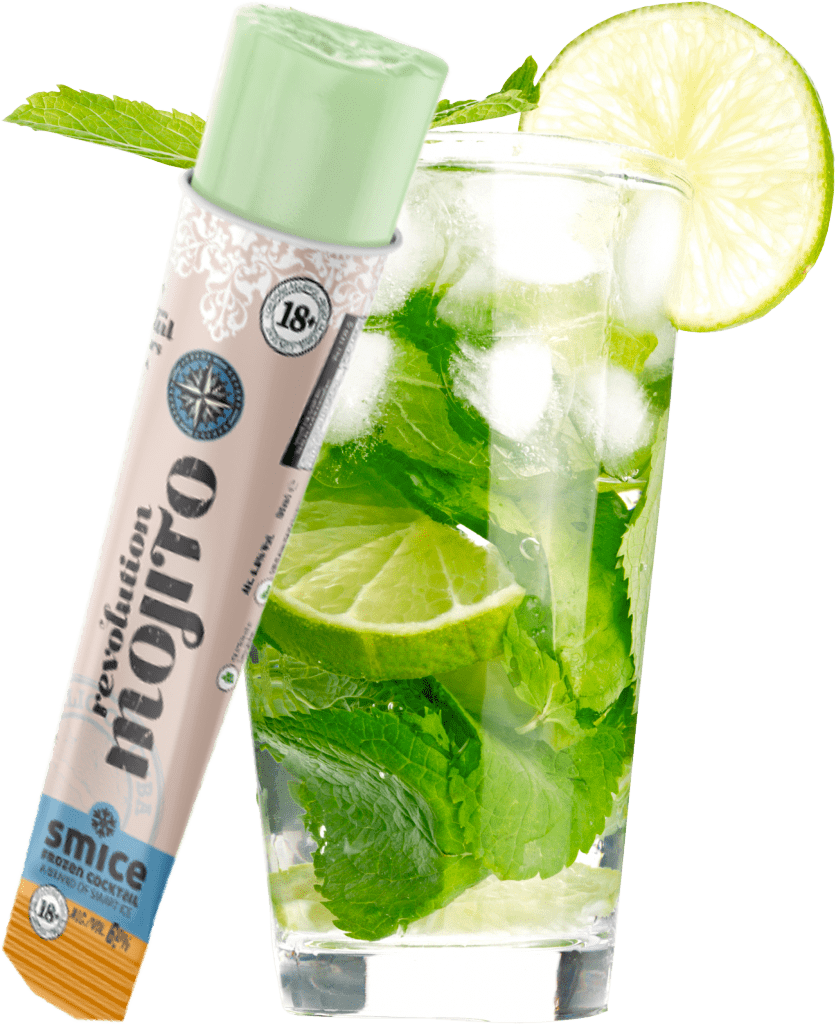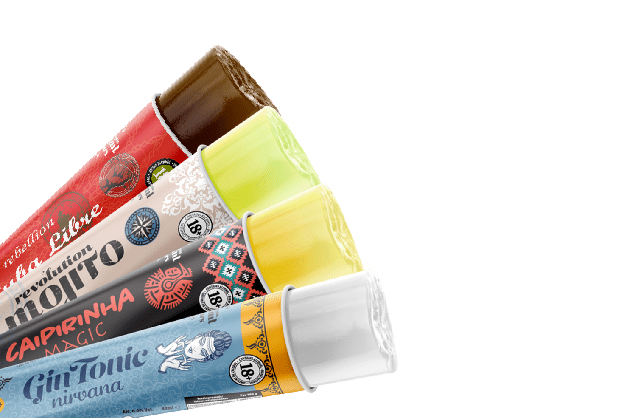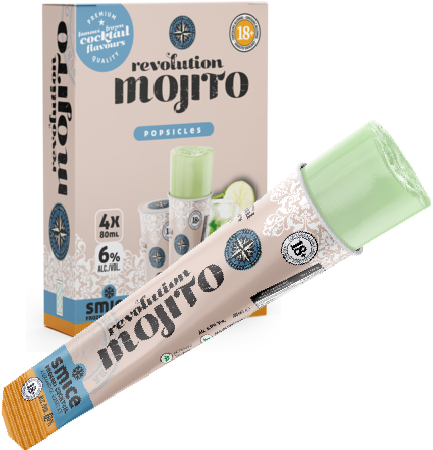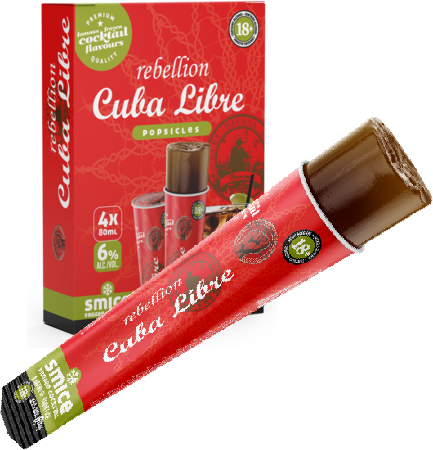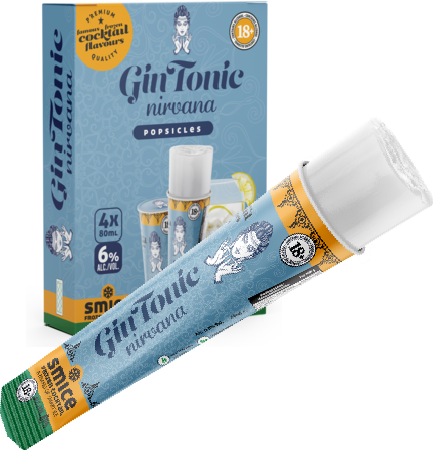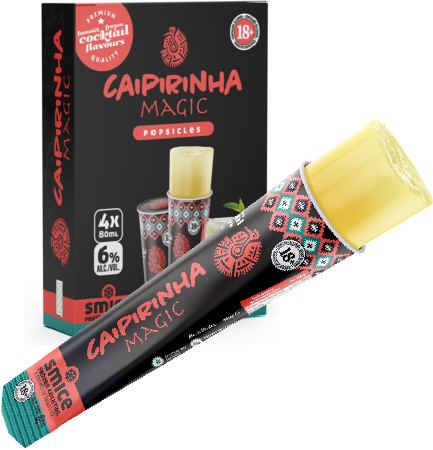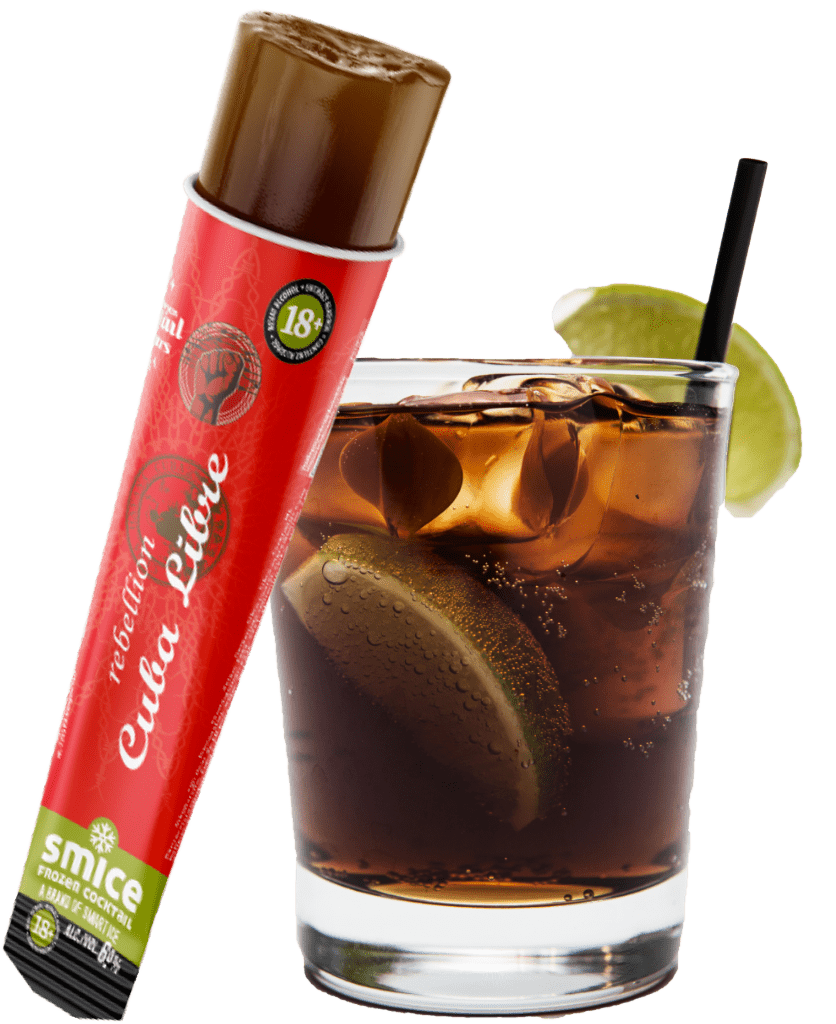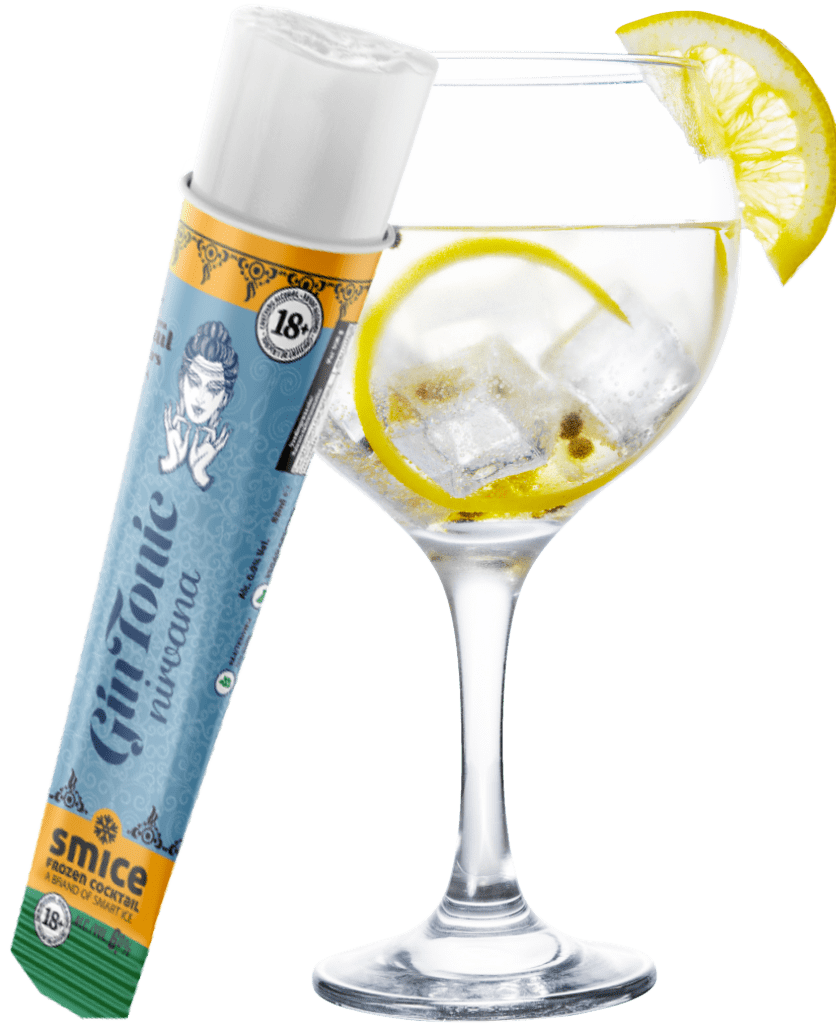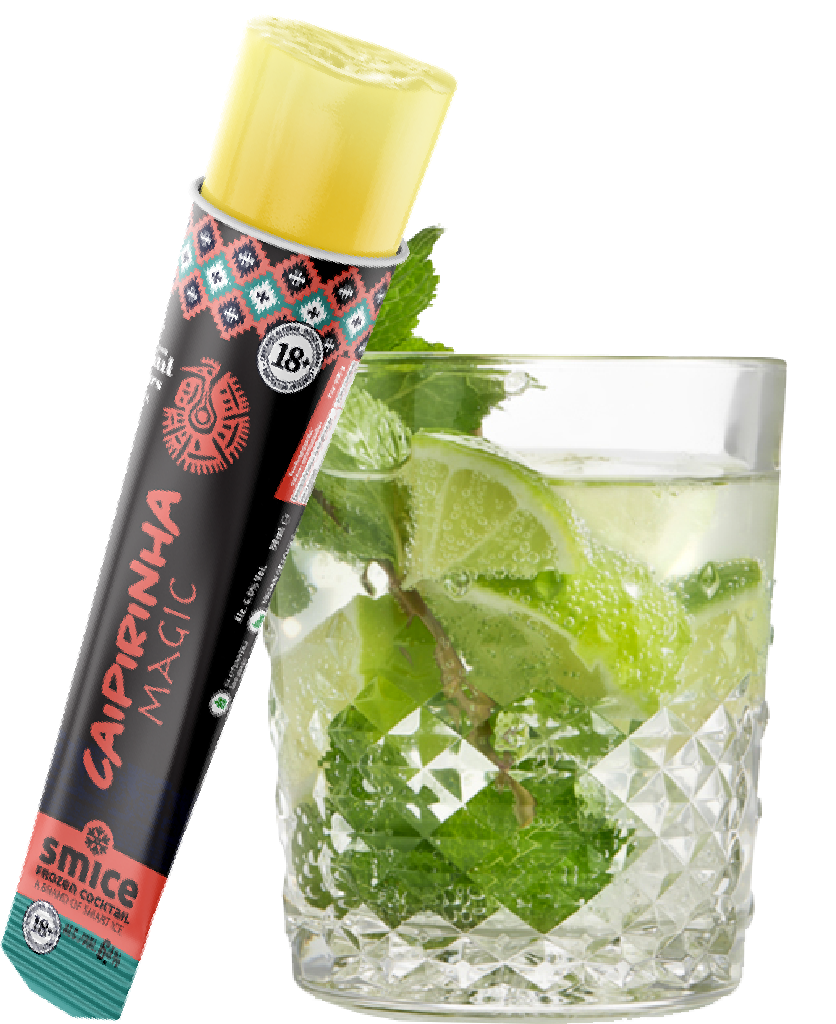FROZEN COCKTAIL
Mojito
A cocktail with rum, lime juice, cane sugar, spray water and mint with lots of ice. Like most rum-based cocktails, this originates in Cuba. Possibly from the sugar plantations. The Mojito was originally intended as a medicine.
Nowadays, the Mojito is particularly popular in the nightlife for its refreshing taste. There are various theories about the origin of the name. The name may have been derived from the mojo sauce that sometimes mixes lemon. The name can also be derived from the Spanish word mojado which means wet.
